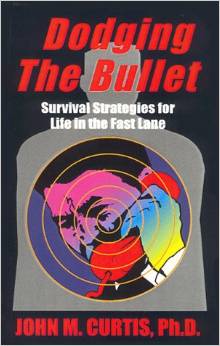Barring a weather delay, 49-year-old Elon Musk will send his SpaceX Crewed Dragon spacecraft to the International Space Station [ISS] Wednesday, May 27, an historic feat never accomplished by a private space company. While partnering with National Aeronautics and Space Administration [NASA], Musk returned the U.S. to manned space-flight after NASA’s last Space Shuttle flight Atlantis returned to Earth July 21, 2011. At that point, U.S. manned space operations were grounded the first time in NASA’s celebrated history that began with Alan Shepard launched into space May 5, 1961. Musk’s fierce determination to get America back to space has been an historic collaboration with NASA, with billions in government funding, but overcoming enormous obstacles to beat his competitor, Boeing Space Systems into space. Boeing received billions more NASA funding than SpaceX.
While Musk has been shuttling robotic Dragon supply-flights for the last nine years, jumping to manned space operations has been a quantum leap for the U.S. Space Program. Musk has bigger plans than ferrying astronauts to-and-from the ISS. Musk fully expects to return U.S. astronauts to the moon by 2024, the target date set by 73-year-old President Donald Trump. Astronauts 53-year-old Doug Hurley and 49-year-old Bob Behnken are in quarantine in Houston until tomorrow, when they are ferried to Kennedy Space Center on a NASA Gulfstream jet. Both astronauts will start mission briefings, master final procedures and spend time working on their launch-and-entry SpaceX spacesuits. Both astronauts are expected to run through a launch-day dress rehearsal Saturday, May 23, making final preparations before their scheduled May 27 Cape Kennedy launch.
When they go to Launch Pad 39A May 27, they’ll be driven in Musk’s Tesla X SUV from the Operations and Checkout Building. Both astronauts have long-awaited the 265 foot elevator ride, roughly 26 stories, to the top of the Launch Pad’s Tower where a close out team will fit them into the SpaceX’s Crew Dragon capsule to prepare for launch. When the Space Shuttle program retired in 2011, NASA had high hopes for its Orion Space Vehicle, the next generation of manned space-flight. After many fits-and-starts, it became clear that there would be no NASA replacement for the aging Space Shuttle, no longer fit for more space flights. Unlike previous generations of Mercury, Gemini, Apollo to the over-sized Space Shuttle, NASA had no replacement vehicle, forcing the U.S. Space Program to hitch rides on the Russian Soyuz to ferry U.S. astronauts to-and-from the ISS for $350 million.
Founding SpaceX May 6, 2002, Musk saw the eventual end to NASA’s Space Shuttle program, opening the door for commercialization of space. Musk seized the opportunity, founding Tesla Motor Company July 1, 2003, something that’s helped fund SpaceX, giving Musk a net worth of $36.1 billion, rising everyday, as Tesla asserts its dominance in the electric car market. No electric car company is even close to Tesla’s first-mover dominance, with a market capitalization of $149.78 billion, compared with Mercedes Benz at $35.82 billion. When Musk says he gives Tesla customers space-age technology, he’s not kidding, with SpaceX on the verge of making history May 27. Heading to the ISS is only the first mission in an ambitious agenda Musk has to get back to the moon, then eventually head to Mars. Where Boeing stands with Starliner is anyone’s guess.
NASA and SpaceX crews plan to perform a careful series of hardware preps before the May 27 scheduled launch. All systems, including Crew Dragon capsule, Falcon 9 rocket, astronauts Hurley and Behnken, space control ground systems and the ISS are all coordinated for the test flight. Flight readiness review is scheduled for May 21, with launch readiness for May 25. As the excitement builds for the May 27 liftoff, the world watches to see the U.S. get back into space without relying on Russia. “There’s still work to be done,” said Phil McAllister, head of NASA’s commercial space-flight development mission. “We’re still finishing up some final testing. There’s still some documents we have to review,” showing that preparation goes to the nth degree getting ready for liftoff on May 27. Unlike past launches, NASA must share the glory with SpaceX and Elon Musk.
Getting the U.S. back into space was no easy feat for Musk with all the funding and collaboration with NASA. But let there be no mistake, without Musk driving the project there would be no Falcon 9 rocket or Crew Dragon capsule ready to return the United States back to manned space-flight. “The Flight Readiness Review on the 21st is a very big milestone,” McAlister said May 14 at a briefing to the NASA Advisory Council’s Human Exploration and Operation Committee. “That’s going to be when we will all get together one last time and say whether we are ready for flight. So that will be a huge, huge milestone,” McAlister said, feeling the gravity of what’s about to happen. When Altantis landed for the last time July 21, 2011, NASA got that sinking feeling knowing that the U.S. manned Space Program was officially grounded. Thanks to Musk and a lot of NASA collaboration, the U.S. is back in space.



